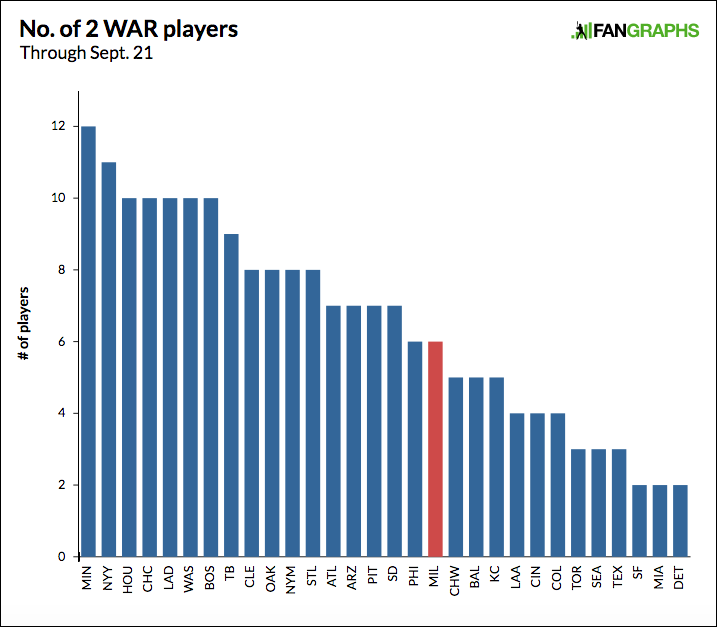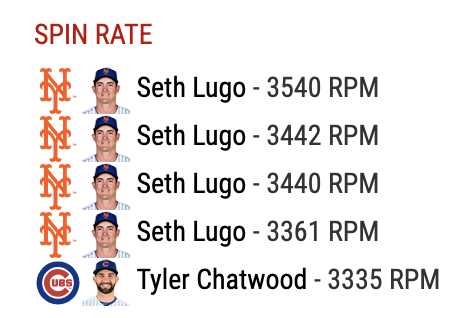All season, the Milwaukee Brewers were a band propped up by a stud lead guitarist. The drummer was often off-beat, the singer was pitchy, the rhythm guitarist was clearly only in the band because he was the singer’s kid brother, and the bass player was … well actually, the bass player was pretty sweet, too. But man, could that lead guitar shred. He was the reason the band could book any gig in town, the standout performer every night. His name was Christian Yelich, and on September 10, he fell off the stage — or rather, he fouled a pitch off his kneecap, and suffered a season-ending fracture. As Jay Jaffe wrote at the time, the injury dampened what were already somewhat long playoff odds for the Brewers. But the band pressed on, undeterred by the loss of their star. And lo and behold, they’ve sounded incredible.
On September 5, our playoff odds put Milwaukee’s chances of reaching the postseason at just 5.6%. Those were worse odds than in-division rivals St. Louis and Chicago, and also put them at lower Wild Card odds than New York and Arizona. They won five straight games before losing Yelich, but that still only raised their chances to 25%. Yelich had already accumulated 7.8 WAR, and was in excellent position to win a second-straight MVP award, and he fell out of the picture. Without him, the Brewers had just one other 4 WAR player, and just six 2 WAR players. That lack of starter-quality depth placed them in the back half of all the teams in baseball.

Every team with fewer 2 WAR players than the Brewers has been firmly out of the playoff race for weeks, and a number of teams in front of them — including Boston, Pittsburgh and San Diego — have been out of the race for a while as well. No contender was more poorly equipped to lose a star player for final month of the season than Milwaukee. At least, that was the way it appeared.
That five-game win streak the Brewers were riding when Yelich hit the IL? It ultimately turned into seven games. They finally lost in St. Louis, but rattled off four more wins after that. Then came another loss, this time at San Diego, followed by four more victories. Overall, the Brewers are 15-2 since September 6. In that time, they’ve raised their playoff odds from 5.6% to 97.1%. It’s one of the best runs any team has put together this season, and given the circumstances, it’s come from one of the last teams one would expect.
A portion of the Brewers’ success can certainly be credited to the competition they’ve faced over this stretch. Of their last 17 games, 11 have come against the Marlins, Padres and Pirates. September is a very fortunate time to run into two last place teams and a third non-contender, but to be fair, the Brewers pushed them around exactly the way they should have. They won 10 of those 11 matchups, outscoring their hapless opponents by a jaw-dropping 60-23 margin. Playoff teams are supposed to look dominant against inferior competition, and that’s exactly what Milwaukee was. Their recent hot streak also included three wins in a row over the Cubs and two victories in three games over the Cardinals, the two most direct obstacles to their postseason hopes. Read the rest of this entry »




